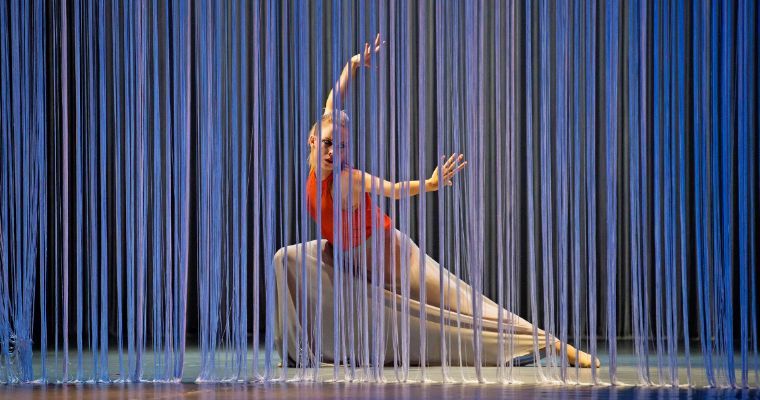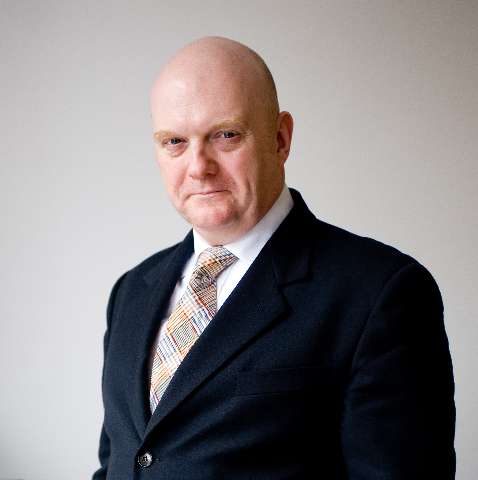The creativity of Béla Bartók is to be celebrated by Müpa Budapest with the Bartók Spring International Arts Weeks, commemorating the 140th anniversary of the great Hungarian composer’s birth. A packed programme of arts events will include new works by three distinguished Hungarian choreographers and their companies: opening on 13th May with László Velekei’s GisL, a one-act distillation of Giselle by the Ballet Company of Győr (performed to new music by Félix Lajkó); then Balázs Vincze’s premiere of Vasarely Etudes, to be performed by Ballet Pécs on 15th May; and the festival will close on 24th May with Tamás Juronics’ dance theatre inspired by Bartók’s symphonic work, the Concerto for Orchestra; performed by the Szeged Contemporary Dance Company alongside the Hungarian National Philharmonic.

I interviewed each choreographer during the final stages of preparing their world premieres and started by asking what it meant to have been selected to make a work for this important event. For Velekei, the key significance was a matter of Hungarian cultural history: “It’s an important appreciation of the Ballet Company’s last 42 years that we can represent the city of Győr by playing a decisive role in such a prestigious festival,” he told me. Vincze’s company, Ballet Pécs (where he has been director since 2005) will be performing at Müpa for the fourth time and he sees this ongoing recognition “by one of the most prestigious institutions on the Hungarian art scene as creating new audiences for the company’s work.” He started to make dance by accident when working in musical theatre, replacing an indisposed guest choreographer, some 15 years’ ago, to choreograph a production of Bonnie & Clyde. Since then, he has worked on musicals, operettas and operas all over Hungary.
Juronics – who has led the Szeged Contemporary Dance Company since 1991 – confessed to having been “overcome with emotion” and the Bartók Spring International Arts Weeks will also continue an already strong connection. “We were Müpa’s first 'company of the year',” he said, continuing: “it was a treat to cooperate with Zoltán Kocsis – formerly the musical director of the Hungarian National Philharmonic and a world-famous conductor – to create three great pieces. I am very happy that our relationship with the orchestra has now been revived through this invitation to choreograph for Bartók Spring.” Bartók’s music has played a huge part in Juronics’ career. “It always touched me as a young artist and I have had the opportunity to choreograph many of his compositions, which have been important components of my career.”
I asked each choreographer to describe their work for the Bartók Spring International Arts Weeks and to say something about their choreographic practice. Up first, Velekei explained that his choreographic practice is informed by a mix of classical ballet and Latin American dance. He was inspired to a new vision for Giselle by “the image of her being danced to death” and has sought to breathe new life into this masterpiece of 19th-century Romantic ballet, which he described as “every ballerina’s dream”. Velekei was excited by the process of creating the choreography in close collaboration with Lajkó composing a new score: “We tuned into each other from the first minute.”
Vincze’s Vasarely Etudes was chosen to commemorate the leader of the Op Art movement, Victor Vasarely (born in Pécs as Győző Vásárhelyi), representing both the 45th anniversary of the Vasarely Foundation in Aix-en-Provence (which is twinned with Pécs) and 60 years since the formation of Ballet Pécs. “Dance and fine arts inspire one another,” said the choreographer, whose expressive dance theatre uses contemporary skills based on strong classical technique. “So we decided to celebrate our 60th jubilee with a ballet that has been motivated by ten works from the Vasarely Museum in Pécs with the art inspiring the music and the atmosphere of each scene.” It is the first time in his extensive career that Vincze has been inspired by something other than music. “Everything – music (a score by Richárd Riederauer), dance, props and costumes – has originated from Vasarely’s powerful masterpieces. I was surprised at how vivid, powerful and energising his works still are. Somehow the art sucked me in and then came to life. They dictated rhythm, steps and scenes. I feel as if I had stepped into Vasarely’s works and I am truly grateful for this encounter.”
Juronics’ new work is the only one directly related to Bartók and the choreographer explained that it concerns the composer’s circumstances and his state of mind at the time of composing the Concerto for Orchestra in the USA, in 1943. “His illness and enforced absence from Hungary with all the homesickness that went with that and his worries for Europe and the growth of fascism all combined to cause a creative block that prevented Bartók from creating a new work for three years. He worried that he would never be able to do so again,” said Juronics. In articulating the composer’s situation, Juronics has created allegorical figures to represent the notion of home and homesickness; the terrors of war; the ugliness of the world and the agony and beauty of the creative process. One of the dancers represents Bartók, masked and lying on a hospital bed, surrounded by his dreams and thoughts. “Composing became Bartók’s therapy and by the time he had completed the Concerto he was able to leave hospital,” explained Juronics.
How did each choreographer feel about choreographing a new work for an online rather than live audience? Velekei felt the loss of interaction. “We have lost contact with our audience, which is the most basic inspiration for dancers.” He was also quick to point out that the role of the technical staff making the recording becomes an additional creative component. “Through their eyes, the piece is reshaped and we need to find common intersections through which we can look at the same work. It’s an intimate, sensitive and complex task, but I’m sure it will work perfectly!” Vincze agreed that technical elements such as lighting and scene transitions need to be adapted but he confirmed that Vasarely Etudes has been conceived as a stage performance and will be easily adaptable to a live audience.
Juronics admitted that it has been “a challenge to rehearse while maintaining the pandemic regulations and that the uncertainty about the continuing absences of live audiences from theatres has been difficult.” Velekei’s first year as director of the Ballet Company of Győr coincided with the pandemic and he has known nothing other than being forced online. “I cannot complain because all the goals we set since I became director have been achieved. We have been able to hold outdoor performances, including Anna Karenina in Szarvas, which won the Best Performance and Best Choreography Awards. We have been able to make opportunity from our difficulties and – most importantly – everyone in the company has remained healthy.”
Vincze confirmed that Ballet Pécs has maintained the same routine in its studios throughout lockdown, although he confesses that “the lack of live performances in a theatre has been difficult to deal with mentally. Fortunately, we are a small company of just 20 dancers and so we have paid attention to each other like a small family.” Juronics learnt how to turn despair into an opportunity when the third wave of coronavirus hit. “We were in the middle of rehearsals,” he explained, “and I went through a minor crisis of insecurity at the time, not knowing when the work (Blue) could be performed. But, I soon realised what a gift it is to gain time and it was so good to have the rare chance to keep working on a piece before its premiere.”
All three of the dance ensembles have a strong international reputation, working with both Hungarian and international choreographers and performing regularly (before the pandemic) outside of Hungary and Europe. The British choreographer Cameron McMillan made Speak to Me for Ballet Pécs and Vincze believes that it is essential to expose his dancers to new ideas. “I’m always happy to hear when these artists praise our dancers. It confirms that we do our job well,” he confirmed. Szeged Contemporary Dance Company has cooperated with 27 guest choreographers to date and Enrico Morelli is currently working on his fifth piece for the company. Juronics sees the role of these companies as “cultural diplomats” for Hungary. And, he said proudly, “wherever we go we always meet with success.”
The Bartók Spring International Arts Weeks celebrate one of the most significant figures in Hungary’s rich cultural history but the festival, which Müpa aims to develop into a regular event of significance both internationally and regionally within Hungary, is robustly looking to the future across all the arts and, this year, it does so by providing a major platform to showcase new work by these three experienced Hungarian choreographers and their exciting companies.
This article was sponsored by Wavemaker Hungary.


